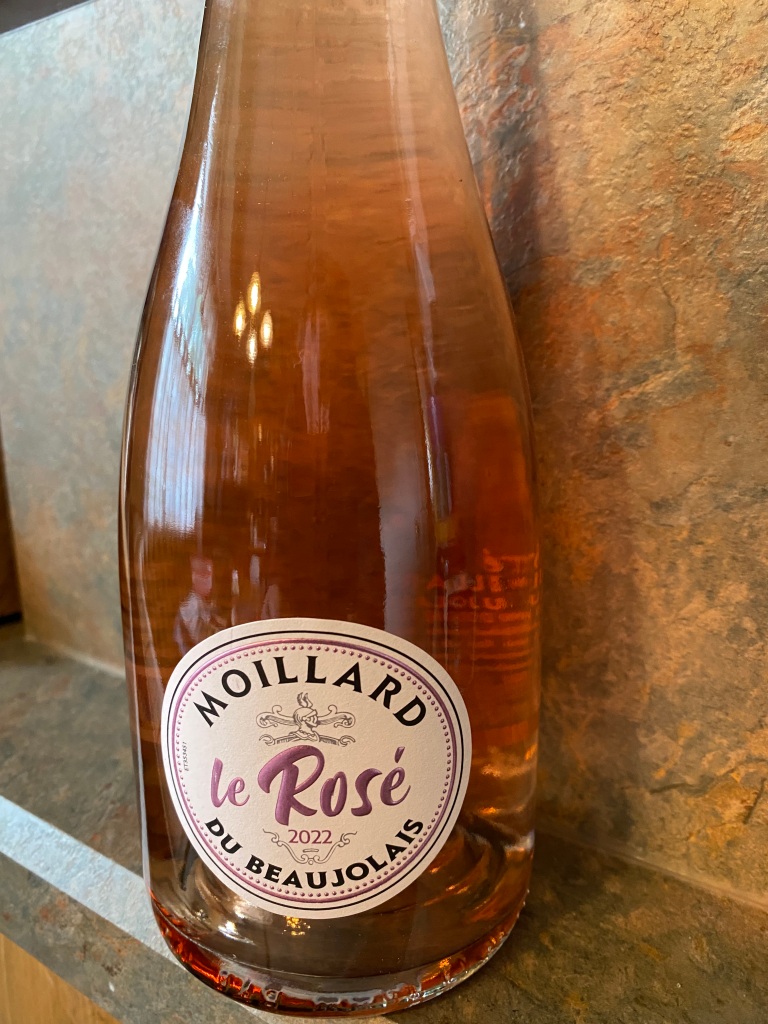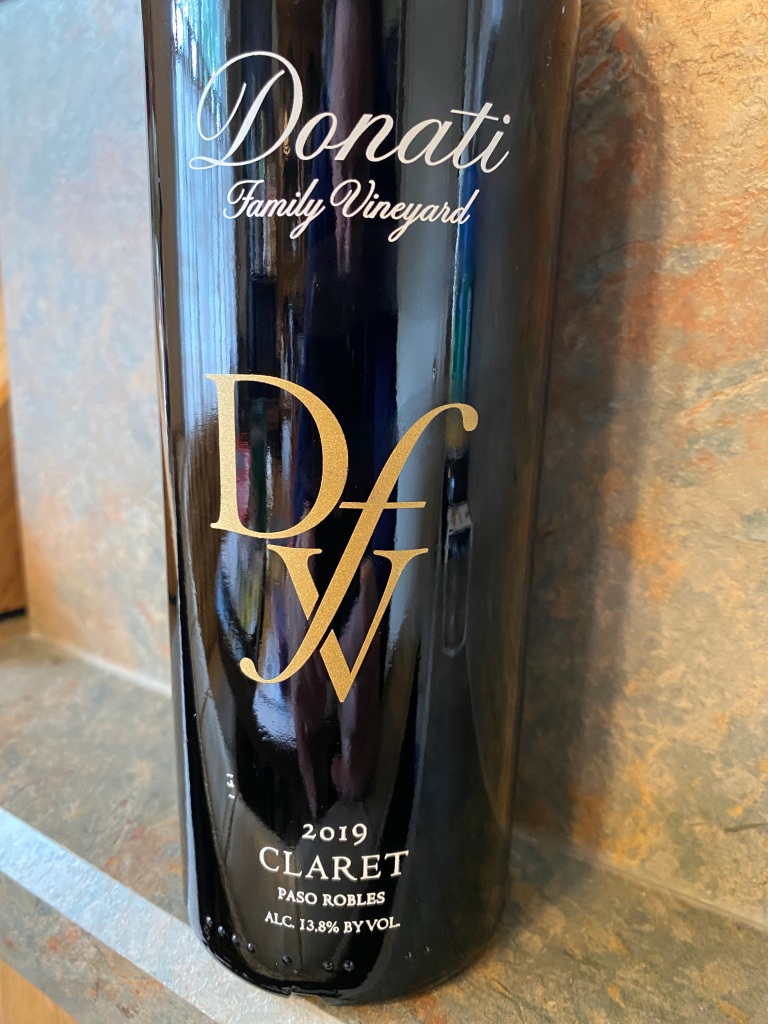I was overdue going into my favorite place, The Fine Wine Source in Livonia, Michigan. First my Bride for almost a month and myself, after her third week, I was down for two weeks and we both were taking Paxlovid, trust me wine is better.

The first wine club selection representing the Old World is Moillard Beaujolais “Les Rosé” 2022. Beaujolais with a red and a white wine appellation is just south of Burgundy and is considered the spiritual homeland of the Gamay grape. It became known as an easy-drinking wine, personified by the “Beaujolais Nouveau” era that started in the Seventies. The region is home to ten “Cru” vineyards and a couple of cult wine estates. Moillard is an historic Burgundian negociant located in the Cote d’Or. Half of their production is in the Premier Cru level in both the Cote de Nuits and the Cote de Beaune. They are also recognized for a range of wine offerings using Chardonnay, Pinot Noir, and Aligoté. Symphorien Moillard found the business and Domaine in 1850 and remained family owned until 2008, when it was sold to Vincent Sauvestre who also owns the negociant Jean-Baptiste Bejot. The Gamay fruit for this wine is handpicked from different vineyards of Beaujolais, the Liergues area and Saint-Jean -d’Ardieres. During the post-fermentation period, the juice spends a few days in maceration for color. A pale pink wine that offers notes of intense red fruits, lemon citrus and a dash of mint. On the palate, fresh round tones of raspberry and strawberry with a splash of lemons. An ideal summer wine to be enjoyed.

Representing the New World was Donati Family Vineyard Claret Paso Robles 2019. The Donati family started arriving in the Paicines region of the Central Coast in 1998, when they purchased the land that would become the family estate and vineyard. Since then, they have planted the vineyards and built a state-of-the-art winery. Paicines is the southernmost AVA in the San Benito County and in the 1980’s and 1990’s the area was associated with the production of bulk wines, but a few wineries are attempting to correct that image. To this day, much of the fruit is grown and then sent to wineries in other parts of California. It is still home to the five-hundred-acre Vista Verde Vineyard that was previously owned by Almaden Vineyards, before the company was sold and split up in the 1980’s. The sandy soils of gravel and limestone have forced the vines to develop deep root systems, because of the good drainage and has strengthened the vines. The wine is a blend of forty-nine percent Cabernet Sauvignon, thirty-nine percent Merlot, five percent Malbec, five percent Petit Verdot and two percent Cabernet Franc. The wine began with Initial Fermentation in Stainless Steel tanks with twice daily punch-downs. It was then aged for twenty months in oak, with four percent new French, eleven percent new American, and six percent new Eastern European. A dark purple-red wine offering notes of cherry, raspberry, cherry cola, chocolate powder, cigar box, caramel, and vanilla. On the palate bright acidity with tones of pomegranate, nutmeg, white pepper, and rhubarb with integrated firm tannins and a medium finish of cranberry, plum, and tobacco.

I also had a chance to taste some of their newest arrivals, which will be written about in due time. I was getting ready to go pick up my Bride for a casual dinner out, and God knows we needed a night out, when they wanted me to try a wine, that they just bought out the total inventory for the state, and it was one of my I can’t say no to wines. I was tasting Henriques & Henriques Boal Single Harvest Madeira, Portugal 2000. Henriques & Henriques was founded in 1850 by Joao Goncalves Henriques. After his death in 1912, his sons created Henriques & Henriques. The last of the Henriques died in 1968 and the company transited to the closest employees and friends, maintaining traditions, but also accepting new technological systems. They are a producer, an exporter, and they also are the only company that has its own vineyards, as well as maintaining long-standing relationships with several winegrowers. In 1992, they created a new aging cellar, and headquarters on their own property in Quinta Grande. Madeira Bual (Boal) is a fortified wine. Boal is the original name of the grape in Portuguese and is used for Portuguese wines, while the English name Boal is used for the grapes on Madeira. It is also known as Malvasia Fina, but only for Malvasia Madeira (Malmsey). With the changes of renamed European Union of 1993, requiring that at least eighty-five percent was of a state grape; rather than new plantings, there was a decrease of Boal wines. Madeira Boal wines are one of the longest-lived wines, rivalling “vin jaune,” the finest Sauternes, and Vintage Port. The Boal fruit is grown on a blend of volcanic soils; fermentation is done with some fruit left whole-cluster with gentle skin maceration in Stainless Steel with native yeasts, then fortified with natural grape spirits. It is then aged in the classic canteiro system of barrel storage for fifteen years and bottled in 2016. A beautiful deep amber wine offering notes of dried fruits, caramel, cloves, brown sugar, lemon zest, and spices. On the palate supple and elegant tones of raisins, nuts, caramel, honey, and vanilla with complex layering of flavors, old wood, and a very long finish of caramel and nuts with out being treacly sweet. I was still telling my Bride about the finish when I got home, and we drove off for dinner.
